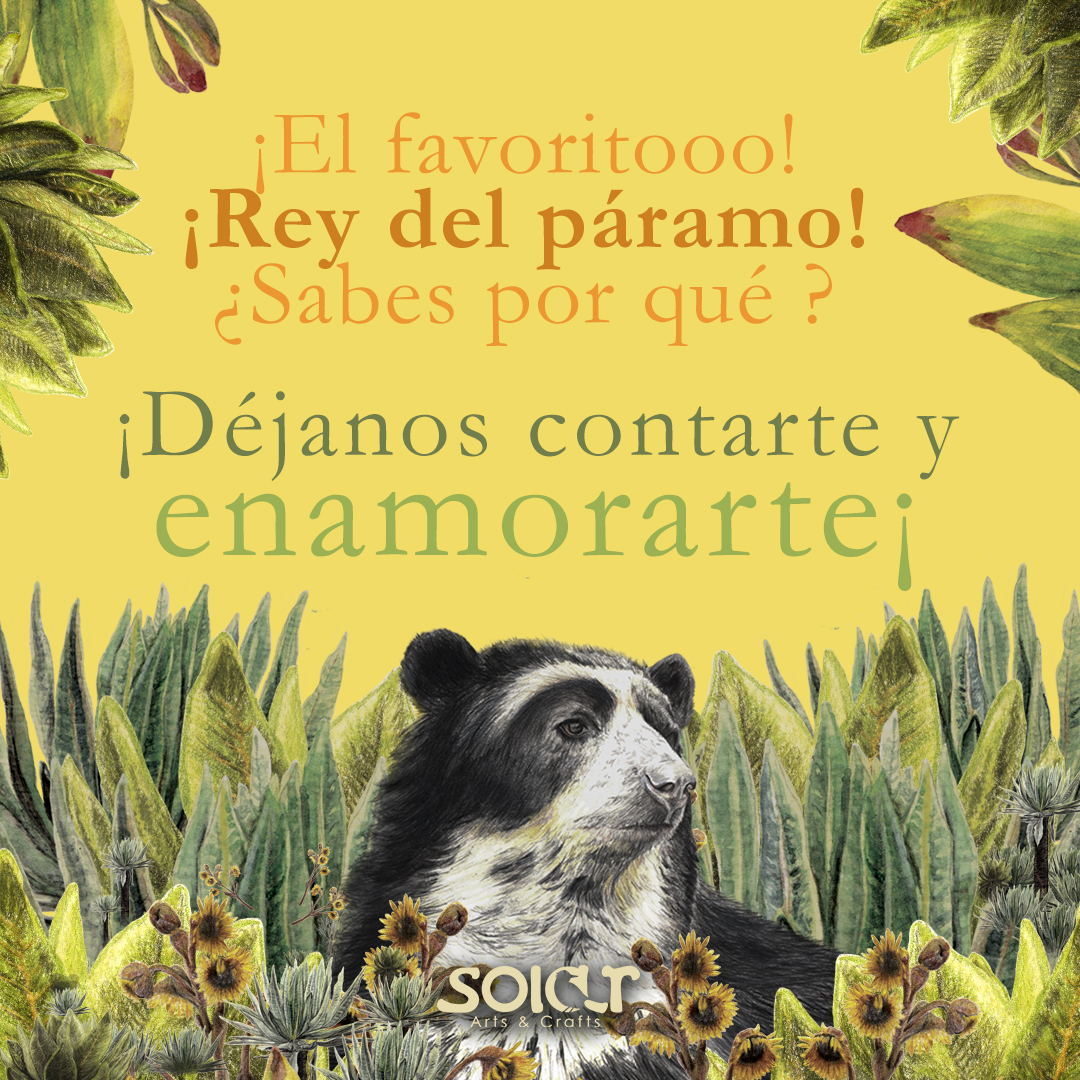Tremarctos ornatus
the only bear from south america
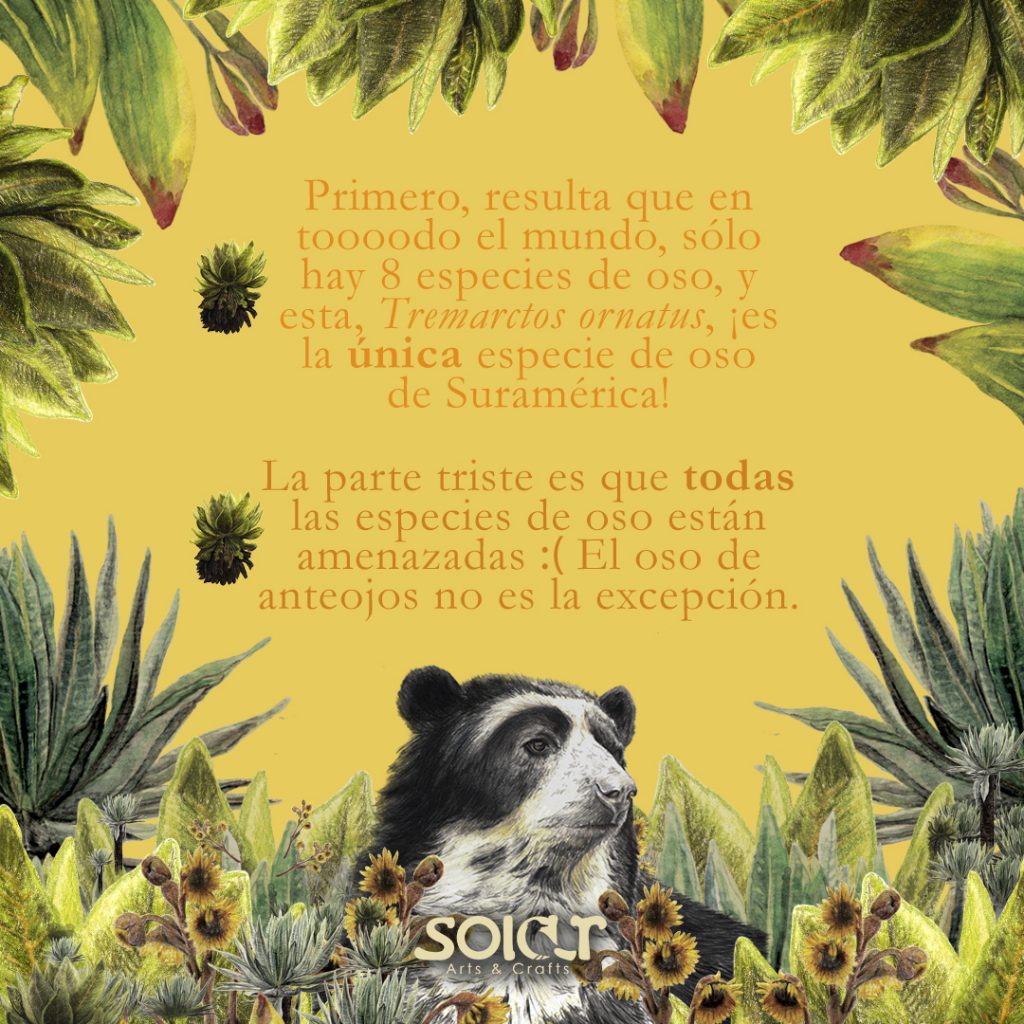
There are eight species of bears in the world, and sadly, all of them fall into some category of extinction threat (1). Among these eight members of the Ursidae family, only one inhabits South America: Tremarctos ornatus. This remarkable species, known as the Andean Bear or Spectacled Bear (Oso de Anteojos, Oso Andino, Oso Frontino in Spanish), is not only unique (and beautiful) but also plays a crucial role in preserving páramos and forests.
It is found in Venezuela, Colombia, Ecuador, Bolivia, and Peru (1). Unfortunately, its conservation status is classified as Vulnerable (VU) according to the IUCN Red List (International Union for Conservation of Nature) (2).
In Colombia, it can be found in all three mountain ranges; however, its populations are fragmented, as we will explain further on (1).
Umbrella Bear and páramos Gardener
The Andean bear inhabits Andean forests, cloud forests, and páramos (3). In its important role as a natural gardener, it disperses seeds (3) that later germinate and grow. In other words, as it feeds and moves through its habitat, it leaves seeds behind, contributing to the conservation of forests.
Other animals, such as primates and birds, also play this role, which is another reason why their conservation is so important—they contribute to ecological balance. This is why the Andean bear is considered an umbrella species: by protecting it, we also safeguard other species that share its habitat.
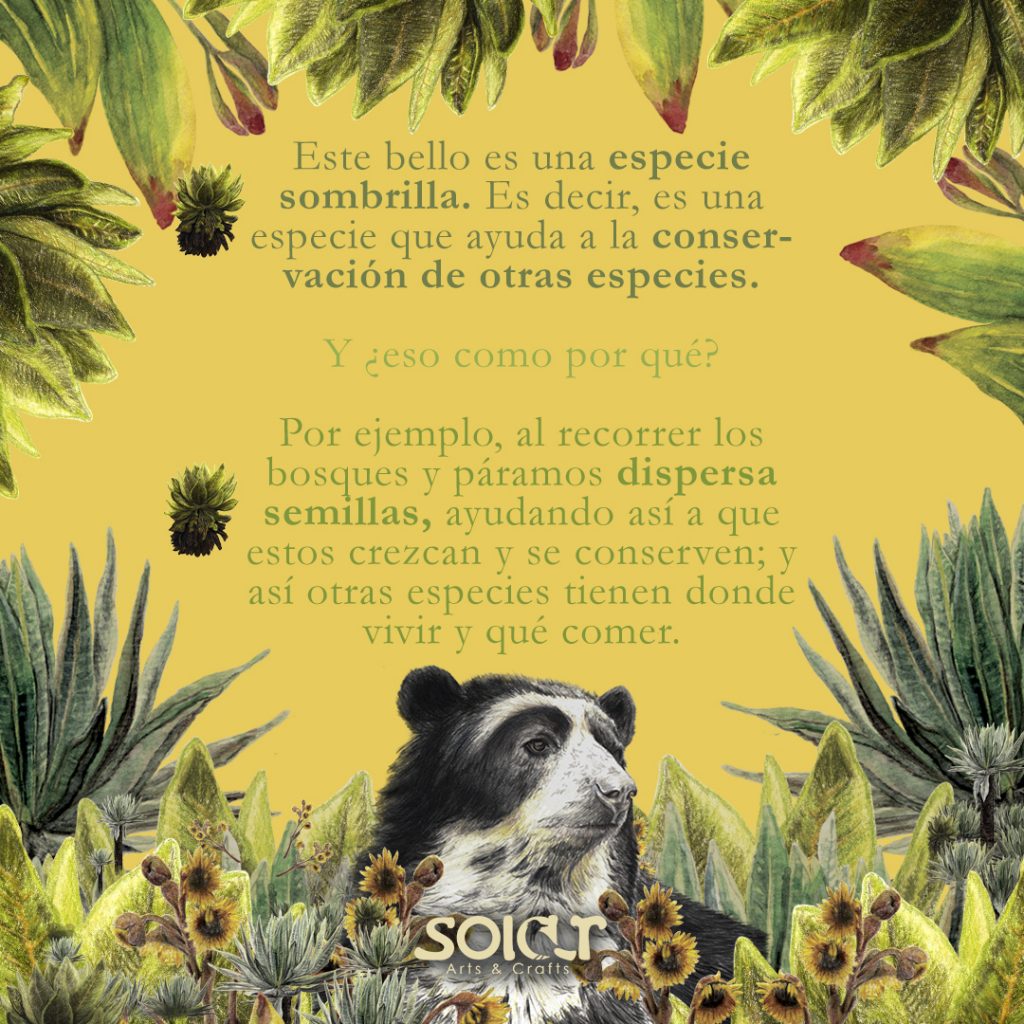
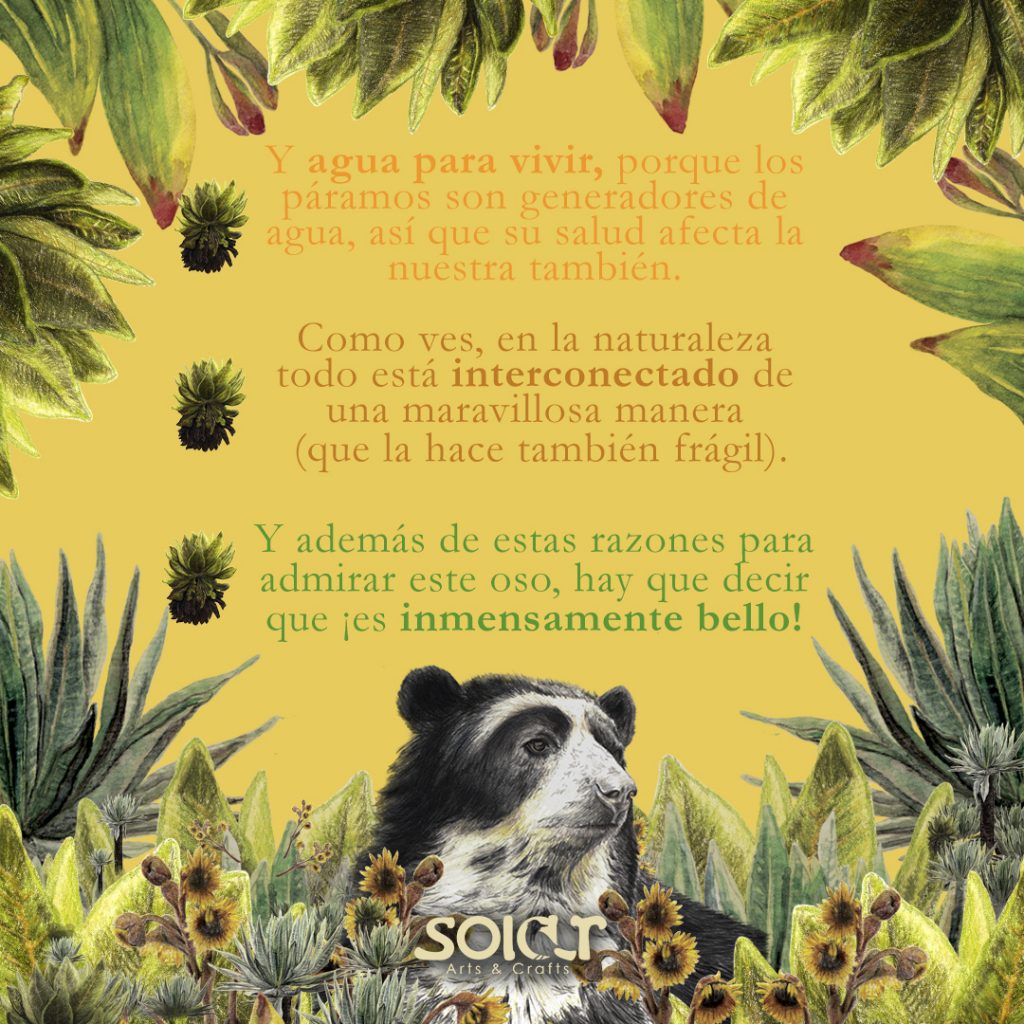
Particularities of being an Andean Bear
Its fur is thick and black, with unique white or yellowish markings around its snout and chest—like a fingerprint, no two bears have the same pattern (1). This species exhibits sexual dimorphism: males are larger and therefore heavier than females (1). We’ve already talked about this trait on social media, it’s also present in some bird species. However, in birds, the differences are often much more striking, with males displaying vibrant colors (so much beauty!) to attract females.
The Andean bear is diurnal, with a highly developed sense of smell and hearing but only average vision (1). In fact, its sense of smell is so powerful that it is 500 times stronger than that of a dog (Wait, what?!) (1). To put that into perspective, dogs—depending on the breed—have between 150 billion and 300 billion olfactory cells, while humans only have about 5 million. This means dogs can recognize up to a million different scents and detect incredible things like 48-hour-old scent trails, diseases like cancer, and even epileptic seizures (4). So, this bear has an insanely powerful nose—probably not a sense humans would want to experience at that level!
And what does he eat?
Its diet is quite diverse, consisting of both plants and protein (we could learn a thing or two from the bear!). It eats small amounts of animals such as rodents, insects, and deer, and only rarely preys on domestic animals—usually scavenging carrion rather than hunting live ones. Its primary diet consists of various fruits, palm fibers, bromeliad pith, and chusquea bamboo shoots (1).
Now, the sad part, why is he in danger?
Well, the sad reality is that human activity and expansion threaten habitats and, therefore, the survival of biodiversity. The Andean bear is at risk due to habitat loss and fragmentation, hunting (3), and the expansion of agriculture and livestock farming (1).
As a result, its populations are fragmented. And what does «fragmented» mean? It means that groups of bears are isolated from one another due to deforestation.
For example, imagine a very large forest where many bears live. Suddenly, a significant number of trees are cut down, and instead of one big forest, there are now two smaller, separate forests. Some bears end up on one side of the cleared land, while others are on the opposite side—essentially disconnected from each other. This makes it much harder for them to reproduce, find food, and move freely.
In our country, Colombia, the expansion of agricultural frontiers brings additional pressures such as hunting, livestock farming, mining, tree cutting for firewood or construction, fires, roads, housing developments, and infrastructure projects (1). This reduces the available habitat for the Andean bear. To make matters worse, this species and other wild animals are sometimes hunted in retaliation for preying on domestic or farm animals.
What can we do?
In this frustrating reality, we are left with a question that seems difficult to answer. El Oso Andino Guardián de los Bosques (2016) (1) suggests several actions and, among them, an important reflection:
Even though we often feel independent and disconnected from nature in our daily lives, we rely on the countless services that biodiversity provides: from the air we breathe and the pollination of majestic plants like orchids to the recycling of nutrients in our agricultural products, pest control, and water regulation—essential for our daily activities and even our survival. All these goods and services, often unnoticed and undervalued, depend on healthy ecosystems in a good state of conservation. (Rodríguez et al., 2016, p.47.)
Individual actions (1):
- Be advocates for biodiversity, speaking up for its protection, as it has no voice of its own.
- Learn about our natural diversity and pass this knowledge on to children and young people.
- Reject hunting and encourage its eradication by learning to coexist with wildlife.
- Act with awareness of the impact of every action we take.
- Demand that governments protect the Andean bear and its habitat.
- Form environmental groups to improve biodiversity conditions.
- Avoid using chemicals in the soil and burning forests to create grazing lands.
- Promote respect for nature within our communities.
In our houses or farms (1):
- Prevent domestic animals from roaming in forests to avoid accidents.
- Do not hunt the Andean bear—or any other wildlife—hunting is not the solution.
- Learn how to contact the organizations responsible for wildlife management.
- Eliminate the consumption of wild meat.
And we would add:
- Restore forests or pastures on farms with guidance from organizations like the Humboldt Institute, which offer programs and nurseries to educate citizens on the best plant species for each region and the wildlife that inhabits them.
It is important to understand that the fauna and flora were in the territories before us. We are the invaders and it is our duty to ensure their care.
Know, love and care. A commitment to us and to biodiversity.
🍃 Our designs inspired in the andean bear 🍃
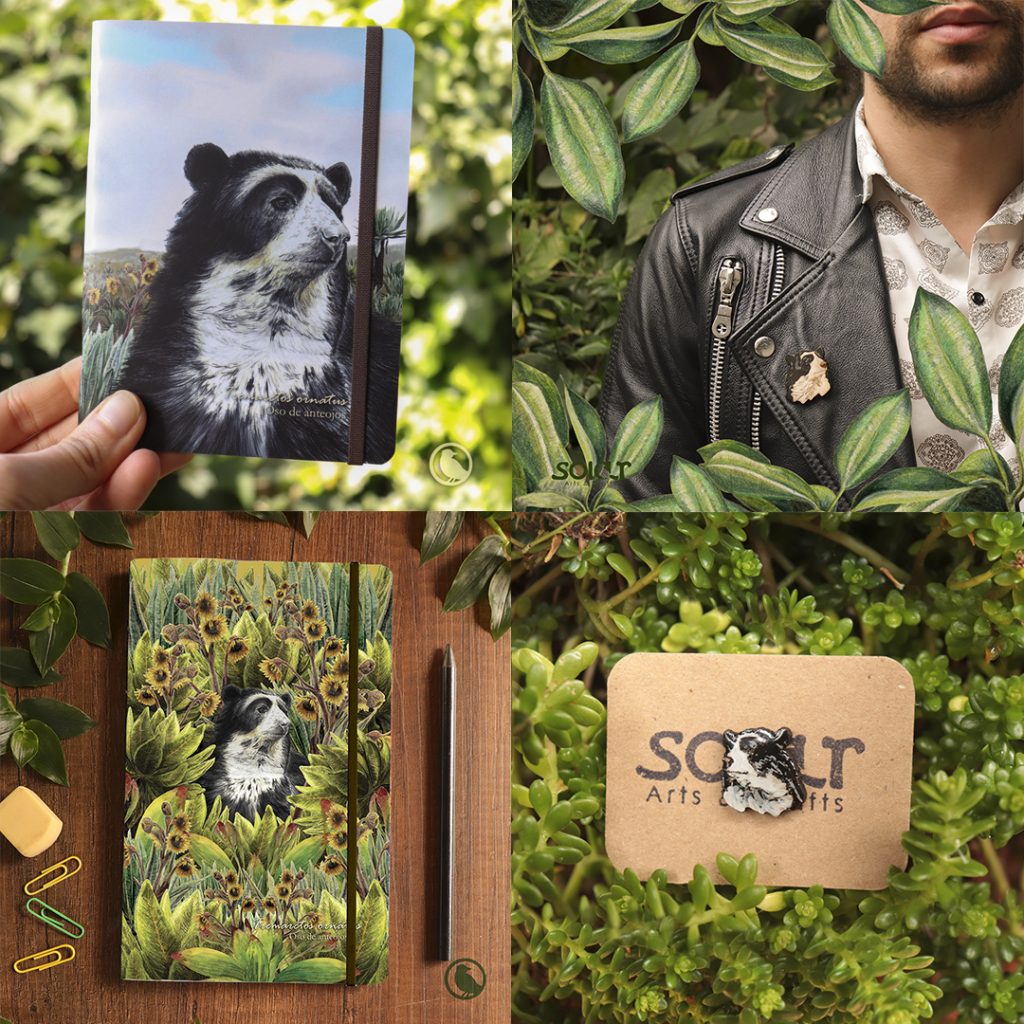
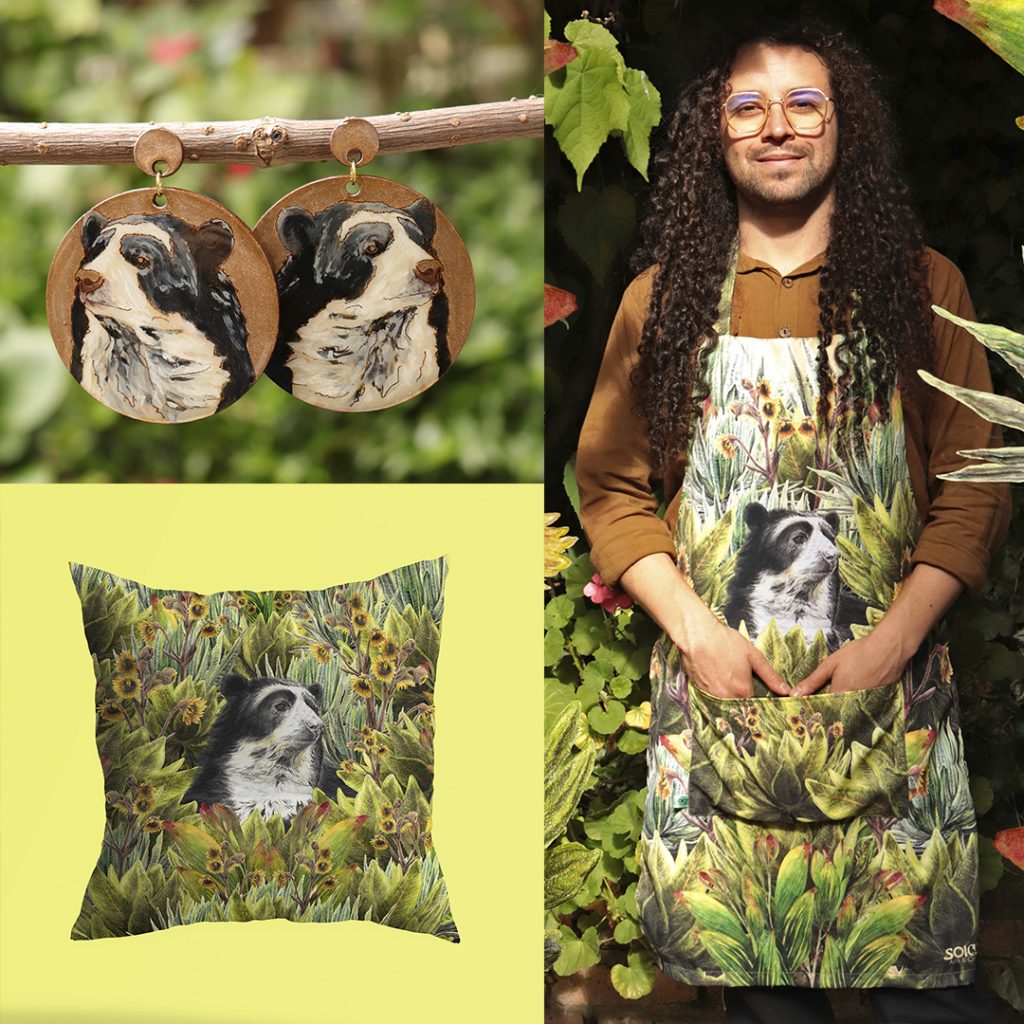
References
- Rodríguez, S., Reyes, L., Rodríguez, C., González-Maya, JF & Vela-Vargas I. (2016). El oso andino el guardián de los bosques. Gobernación de Cundinamarca Parque Jaime Duque. pp.58.
- IUCN 2023. The IUCN Red List of Threatened Species. Version 2022-2. https://www.iucnredlist.org
- Cristian A. Cruz-Rodrígueza , Adriana Reyesb, Ángela Parra-Romeroc , Carlos H. Cáceres-Martínezd, Daniel Rodríguezb, Diego J. Lizcanoe , Diego Zárrate-Charryf, Héctor Restrepog , Edgar Ignacio Gómezh, Irene AconchaAbrilc , Mauricio Vela-Vargasi , José F. González-Mayaf , Laura Nova Leóna , María Helena Olaya-Rodrígueza , Nicolás Reyes-Amayaa, Paola Pulido Santacruza, Robert Márquezj, Elkin A. Noguera-Urbanoa (2020). El Oso andino. Impactos de las Acciones Humanas sobre su distribución. http://reporte.humboldt.org.co/biodiversidad/2020/cap2/205/#seccion1
- Rodríguez, Héctor. (13 de marzo de 2023). El hocico de los perros, un laboratorio químico vivo. National Geographic. https://www.nationalgeographic.com.es/ciencia/hocico-perros-laboratorio-quimico-vivo_18887

